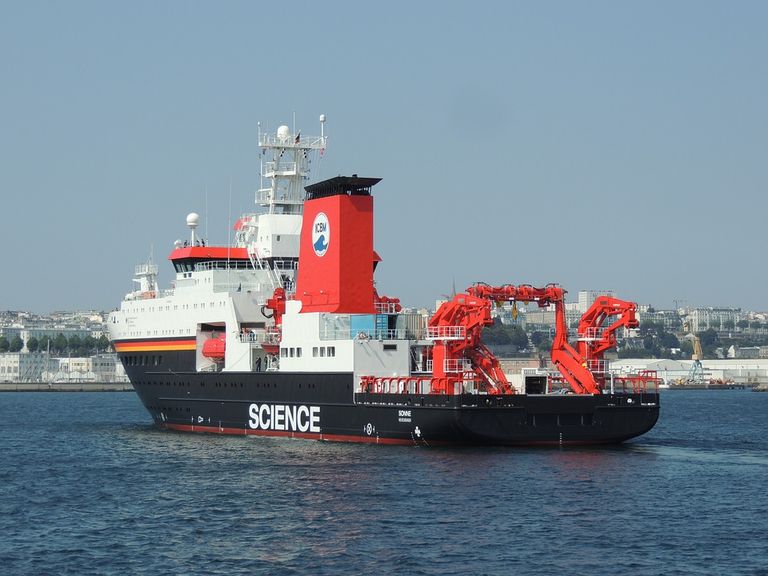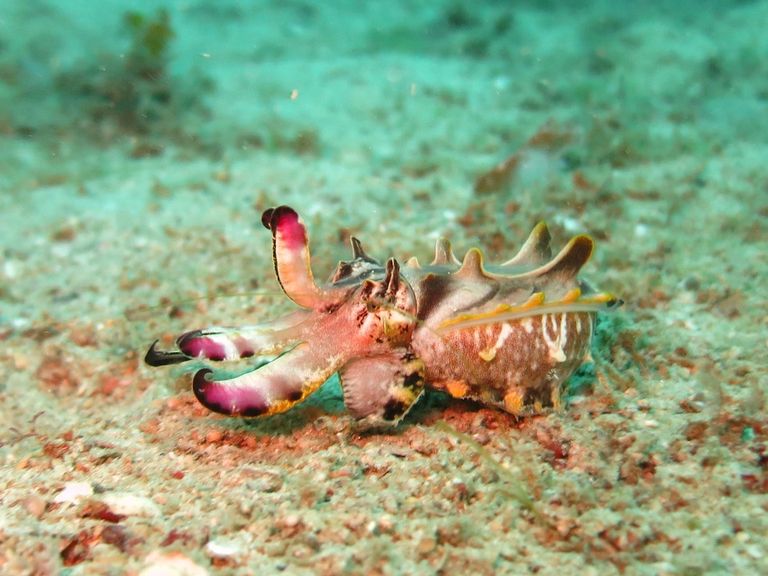
In this week's bulletin we take a look at how you can get involved in volunteering to be a citizen scientist, the number of research vessels in the Indo-Pacific, the "flamboyant" cuttlefish, the concerns over the animal entanglements off the coast of California, and we say good bye to a well known marine biologist.

- Volunteer opportunities. Observe your world. Help the planet. Be a citizen scientist for NOAA.
https://www.noaa.gov/work-with-us/volunteer-opportunities-citizen-scientists
The National Oceanic and Atmospheric Administration offers a variety of citizen science volunteer opportunities, like storm spotting, measuring the Earth's magnetic field from your phone, and phytoplanton monitoring. Perhaps you are a teacher in the need of a new biology lesson. Take a look at LiMPETS, a marine ecosystem monitoring program that includes teachers and their students.

- A SURVEY OF MARINE RESEARCH VESSELS IN THE INDO-PACIFIC
https://amti.csis.org/a-survey-of-marine-research-vessels-in-the-indo-pacific/
The Asia Maritime Transparency Initiative tracked government owned/operated research/survey vessels that are active outside their own waters within the Indo-Pacific.
Such research can serve both civilian and military purposes. Oceanographic data is crucial for undersea operations, as water and seabed conditions affect the ability to detect submarines. Research vessels purportedly involved in scientific research can also use their instruments for naval reconnaissance, gathering intelligence on foreign military facilities and vessels.
The terms “research vessel” and “survey vessel” are commonly used for ships engaged in three types of activity: marine scientific research, naval surveillance, and commercial surveys, especially for oil and gas.
The United Nations Convention on the Law of the Sea (UNCLOS) requires governments to seek permission at least six months in advance for marine scientific research in another state’s EEZ or continental shelf.
Most countries, including the United States, maintain that there are no restrictions on the right to conduct military surveys within the EEZs of other states. But China and several others in the Indo-Pacific claim the right to block foreign military activities within their EEZs.
- Marine Biology Experts Concerned Over Spate of Animal Entanglements
https://www.nbcbayarea.com/news/local/marine-biology-experts-concerned-over-spate-of-animal-entanglements/2344665
Marine mammal entanglements are on a similar level as last year but "the severity of the entanglements" are concerning experts.
"It's especially alarming to see these preventable entanglements in Guadalupe fur seals because this species is still recovering from the brink of extinction," Marine Mammal Center medical director Dr. Cara Field said.

This cuttlefish is flamboyant—but only on special occasions
https://news.uchicago.edu/story/flamboyant-cuttlefish-are-usually-camouflaged-and-nearly-impossible-find
Those purty cuttlefish you see on tv and the youtube aren't always so purty. the Marine Biology Laboratory's Roger Hanlon reminds us in their recent paper that the flamboyant cuttlefish (Metasepia pfefferi) usually saves this display for "special occasions", such as courtship. These amazing cephalopods can even change colors on one side of their bodies while showing a completly different spectrum of colors on the other.
The article includes a great video explaining this interesting behavior.Marine Biologist John Pearse Dies
The retired University of California, Santa Cruz, professor was known for his work on invertebrate reproduction, kelp ecology, and Antarctic marine life.
https://www.the-scientist.com/news-opinion/marine-biologist-john-pearse-dies-67837
Help defend the oceans. Support sustainable fishing and aquaculture/agriculture practices. Don't pollute your local waterways. Donate to your local marine conservation charity.
Top image of flamboyant cuttlefish is from UChicago News.
All other images courtesy of Pixabay.com
We are reposting our collection of the Seven Seas Bulletin onto Blurt.
This is the Seven Seas Bulletin from August 20th 2020.